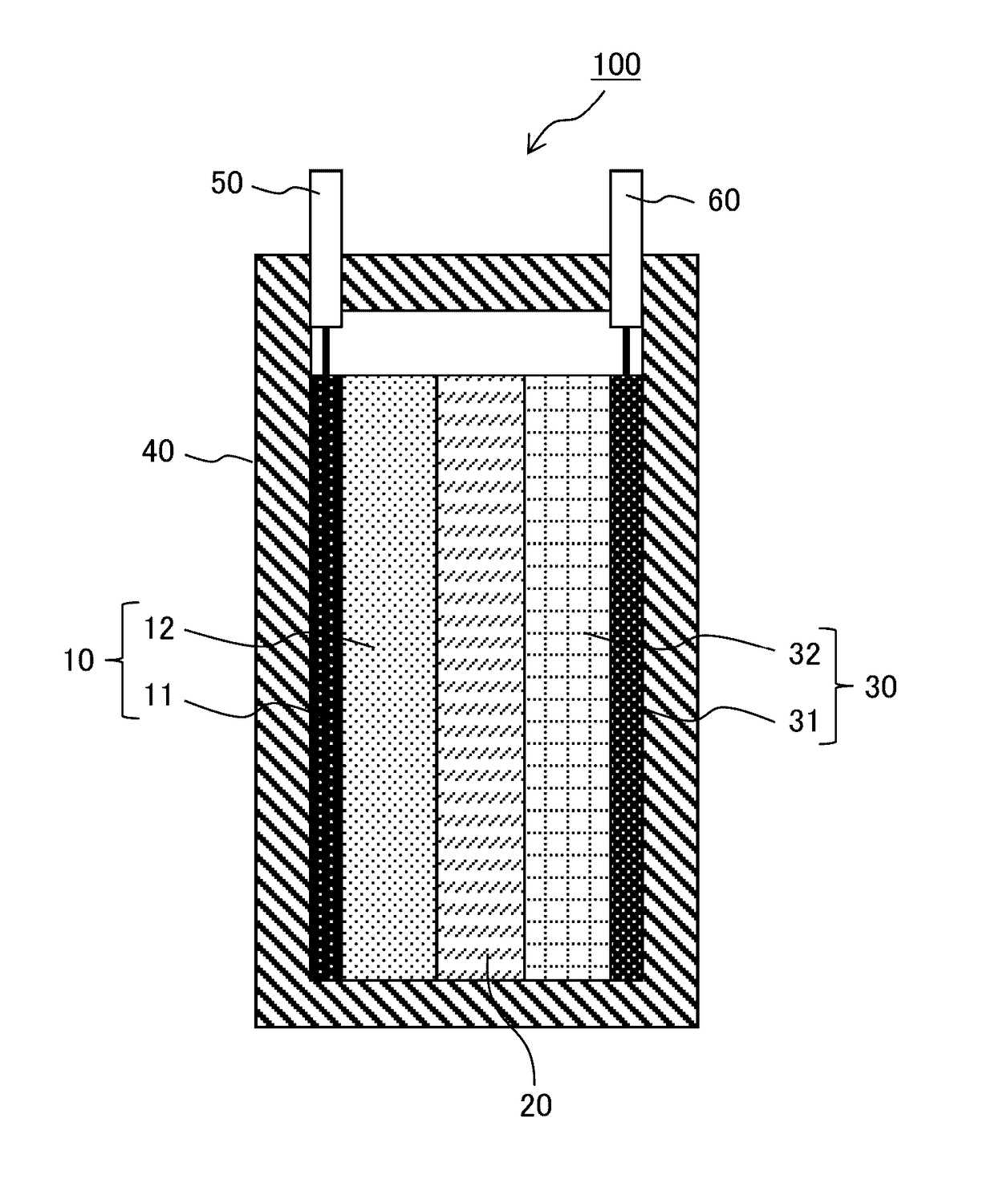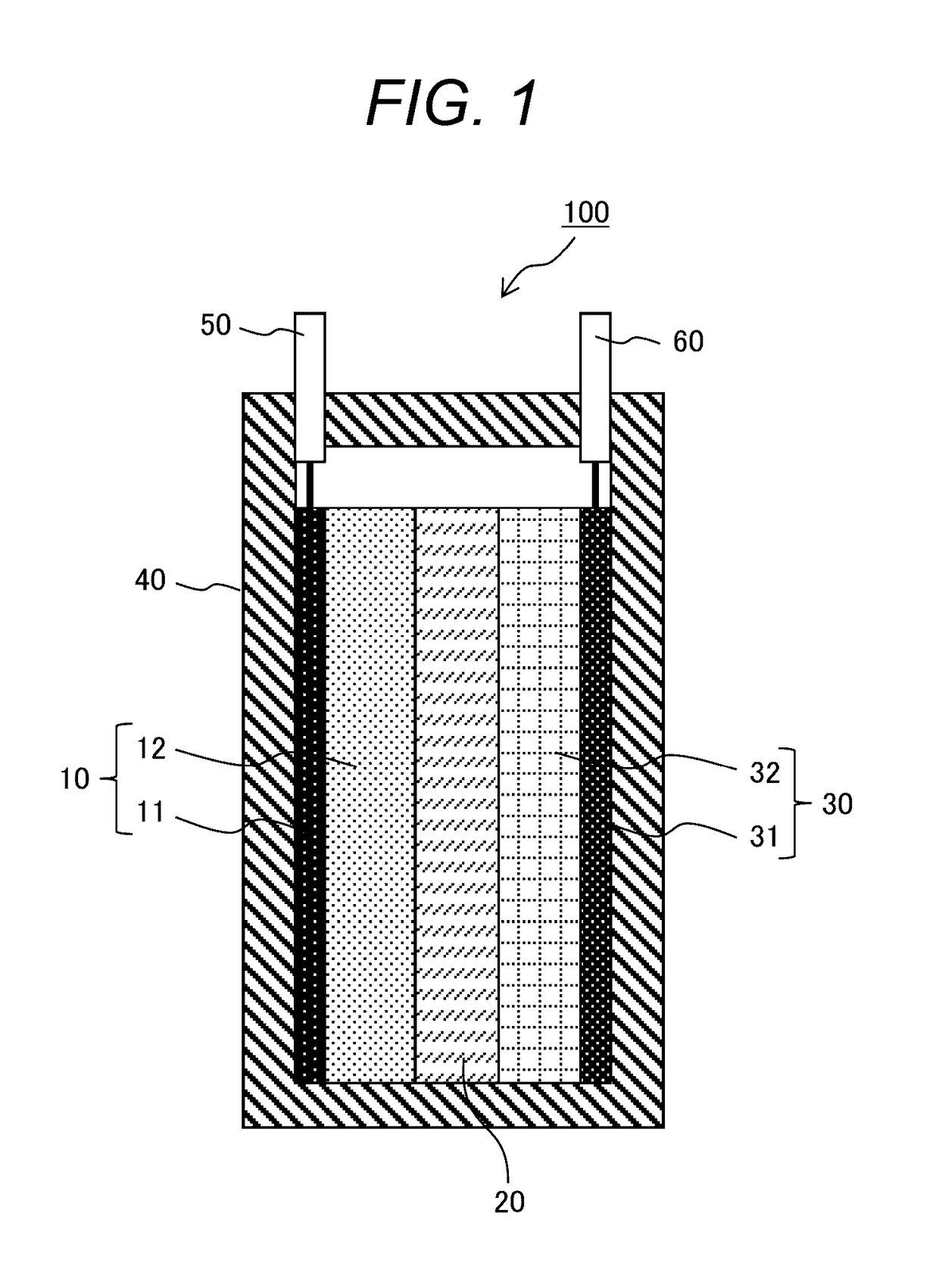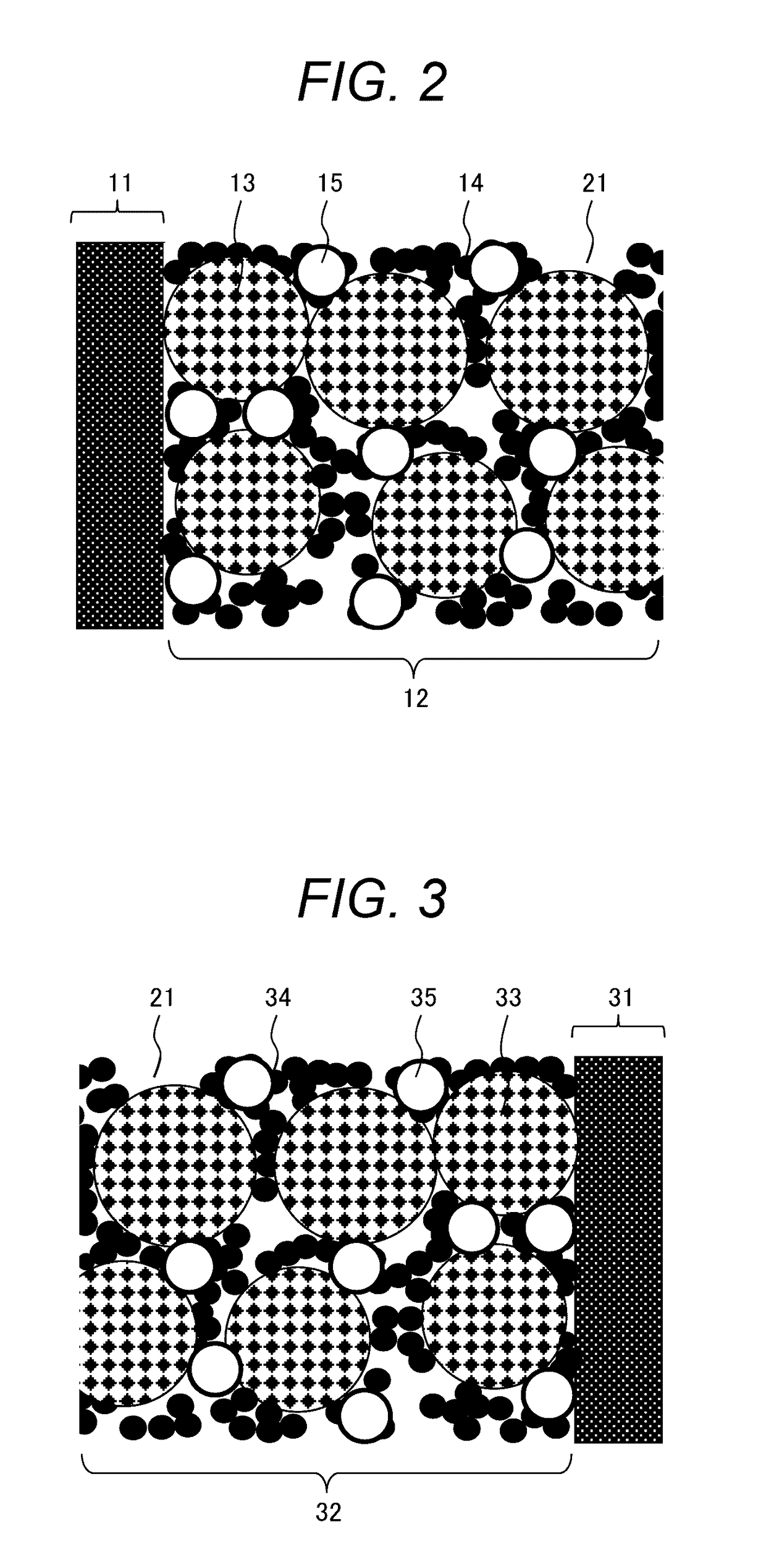Quasi-solid state electrolyte and all solid state lithium secondary battery using same
a lithium secondary battery, solid-state electrolyte technology, applied in the manufacture of final products, cell components, electrochemical generators, etc., can solve the problems of inability to meet the requirements of the contact resistance is often too large, and the production of such a substance is undesirable, so as to achieve a well-balanced combination of contact performance and high level , the effect of high chemical stability
- Summary
- Abstract
- Description
- Claims
- Application Information
AI Technical Summary
Benefits of technology
Problems solved by technology
Method used
Image
Examples
example 1
Fabrication of Quasi-Solid State Electrolyte
[0078]First, an ionic conductor was prepared by mixing tetraglyme (G4) and lithium bis(fluorosulfonyl)imide (LiFSI) in a molar ratio of “G4:LiFSI=1:1”. Next, the ionic conductor (G4-LiFSI) and silica nano particles (SiO2) were mixed in a volume ratio of “G4-LiFSI:SiO2=80:20”, and methanol was added thereto and mixed well for 30 minutes to prepare a quasi-solid state electrolyte slurry. Then, the slurry was spread on a petri dish and the methanol was distilled away to obtain a quasi-solid state electrolyte (QSE) powder.
[0079](Fabrication of Electrolyte Layer)
[0080]A polytetrafluoroethylene (PTFE) powder was added to the QSE powder at 5% by mass, and the mixture was mixed well and extended into a QSE sheet. Next, the QSE sheet was stamped into a shape with a diameter of 12 mm to obtain electrolyte layers of Example 1.
[0081](Fabrication of Positive Electrode Layer)
[0082]LiFePO4 (LFP) as a positive electrode active material and acetylene black...
example 2
[0096]An experiment was conducted in the same manner as Example 1 except that the C rate during charges and discharges at which the initial capacity was measured was changed to 0.5C. The results are also shown in Table 1.
example 3
[0097]An experiment was conducted in the same manner as Example 1 except that the C rate during charges and discharges at which the initial capacity was measured was changed to 1C. The results are also shown in Table 1.
PUM
| Property | Measurement | Unit |
|---|---|---|
| temperature | aaaaa | aaaaa |
| temperature | aaaaa | aaaaa |
| particle size | aaaaa | aaaaa |
Abstract
Description
Claims
Application Information
 Login to View More
Login to View More - R&D
- Intellectual Property
- Life Sciences
- Materials
- Tech Scout
- Unparalleled Data Quality
- Higher Quality Content
- 60% Fewer Hallucinations
Browse by: Latest US Patents, China's latest patents, Technical Efficacy Thesaurus, Application Domain, Technology Topic, Popular Technical Reports.
© 2025 PatSnap. All rights reserved.Legal|Privacy policy|Modern Slavery Act Transparency Statement|Sitemap|About US| Contact US: help@patsnap.com



